curated by Giulia Papa
at BOCS, Catania, Italy
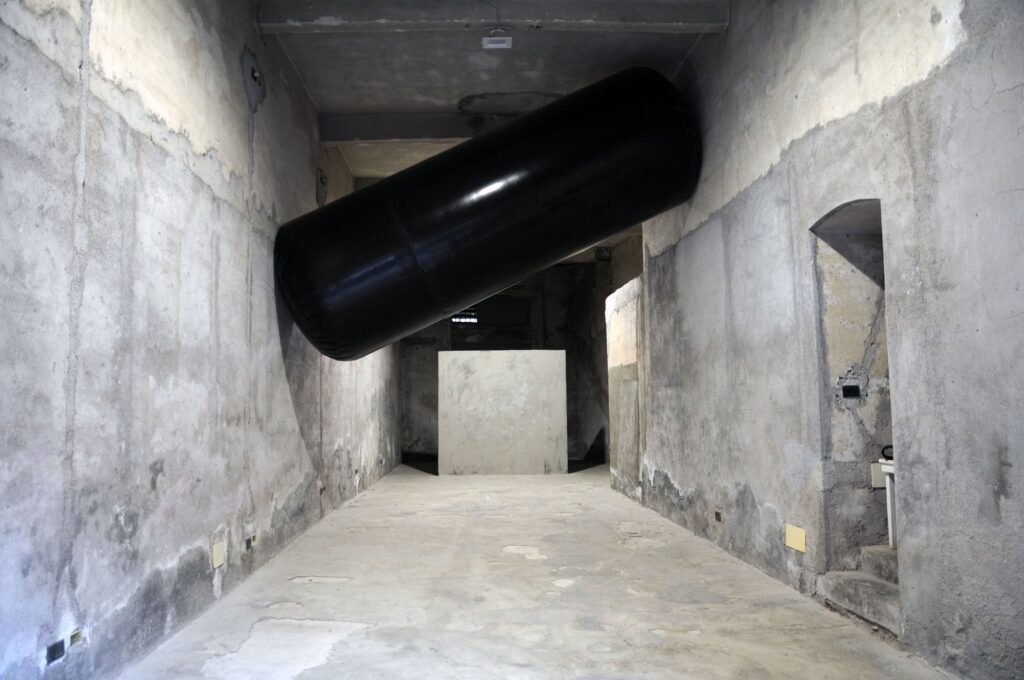
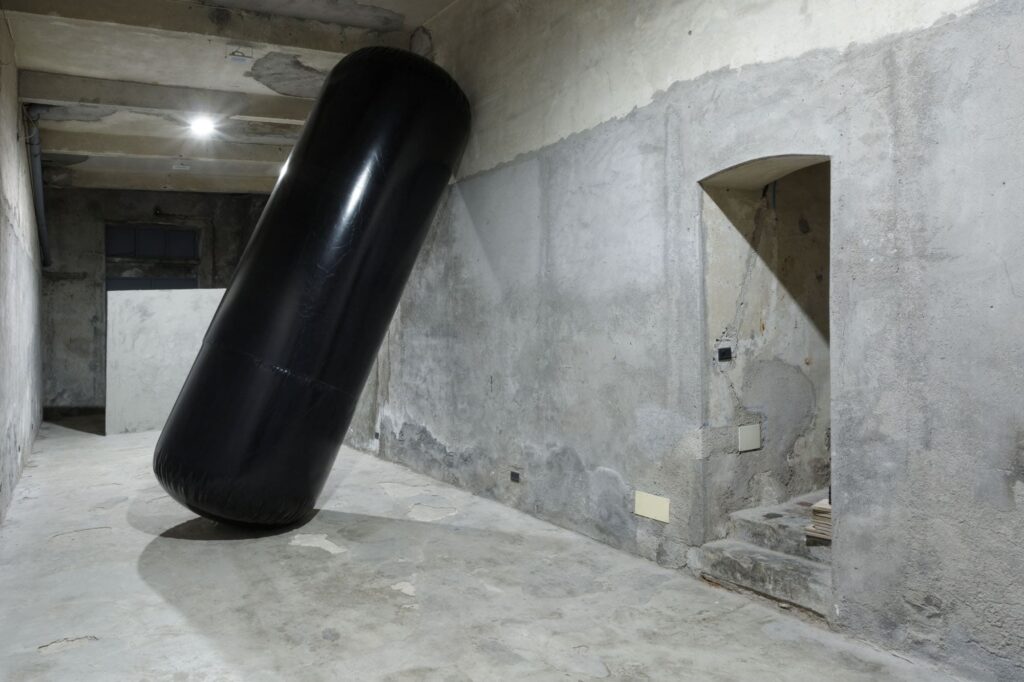
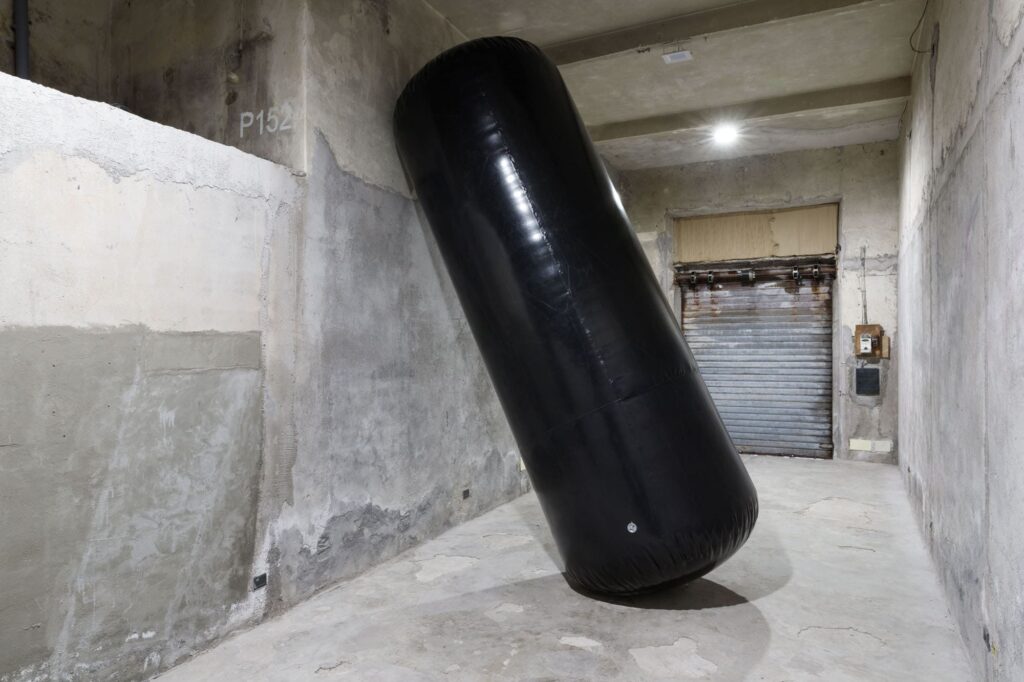
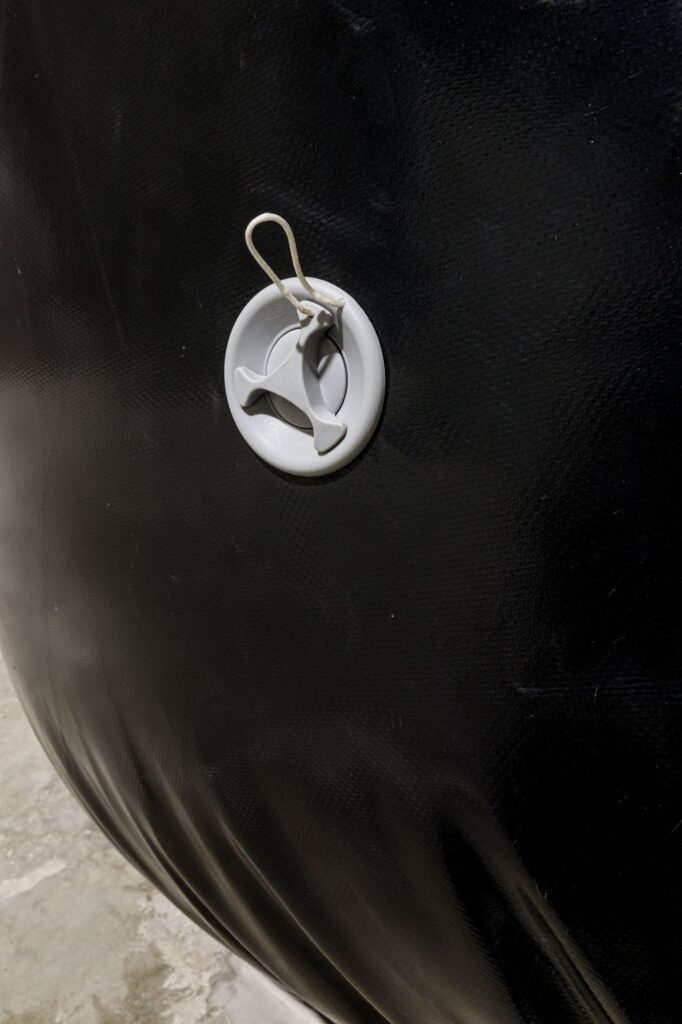
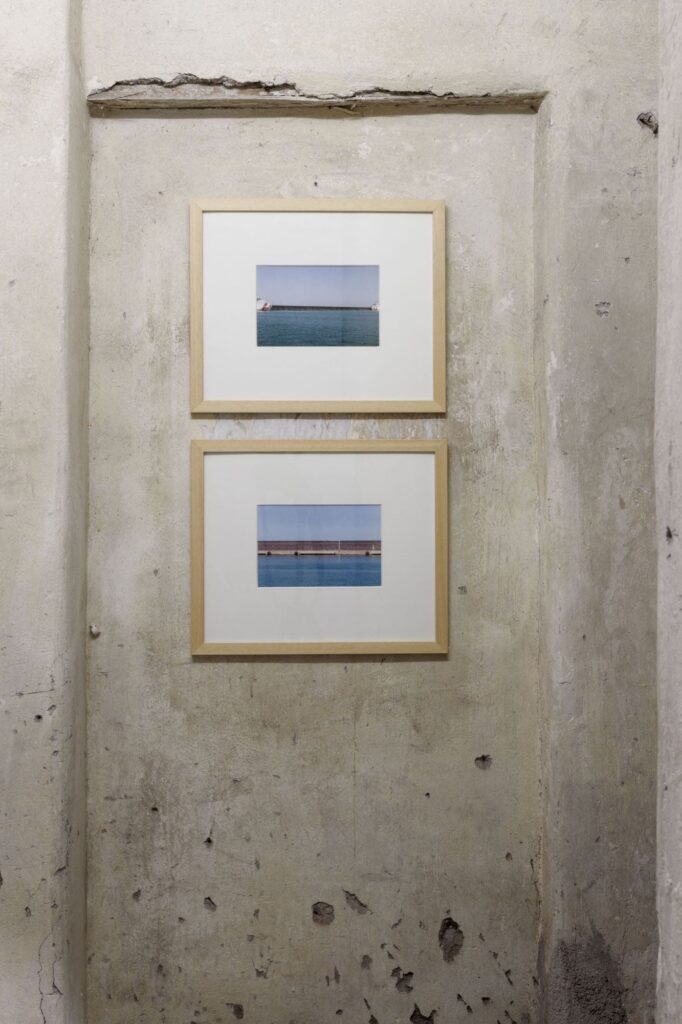
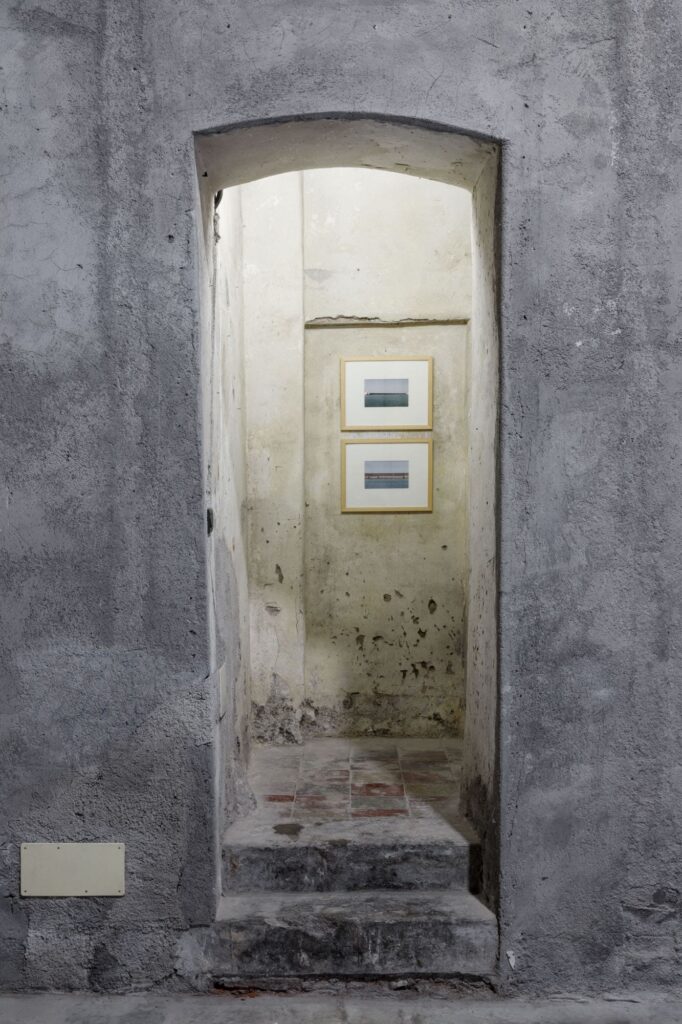
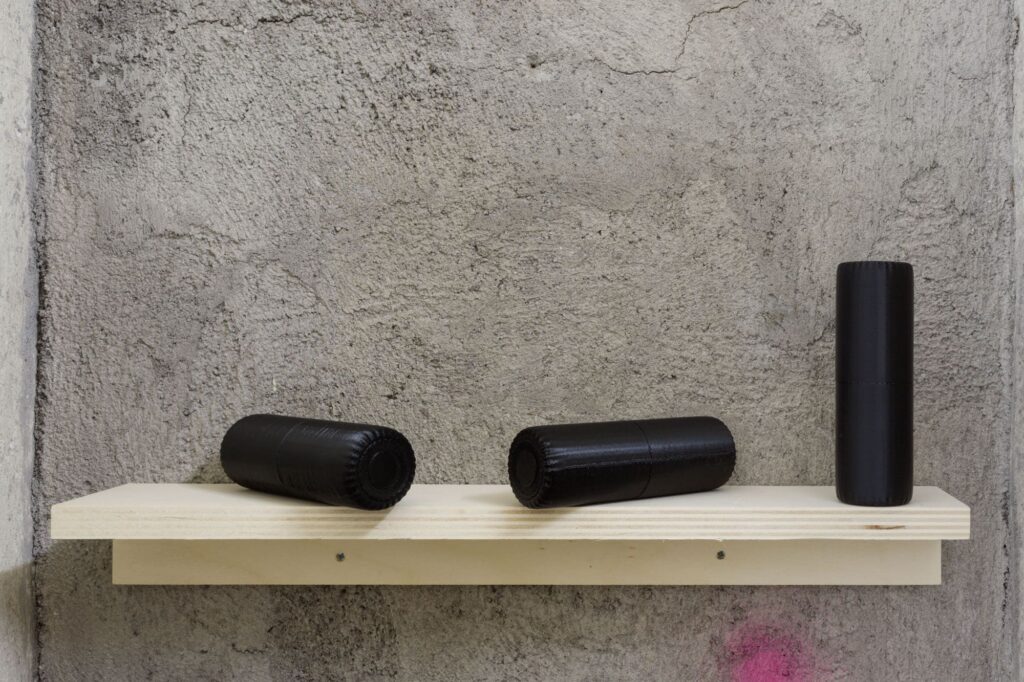

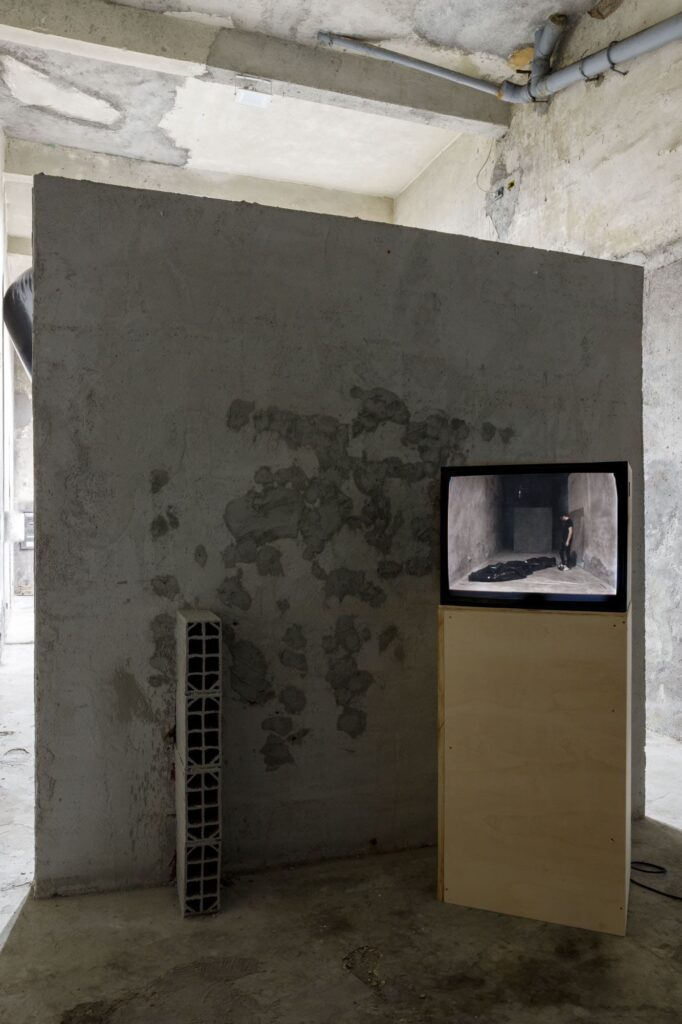
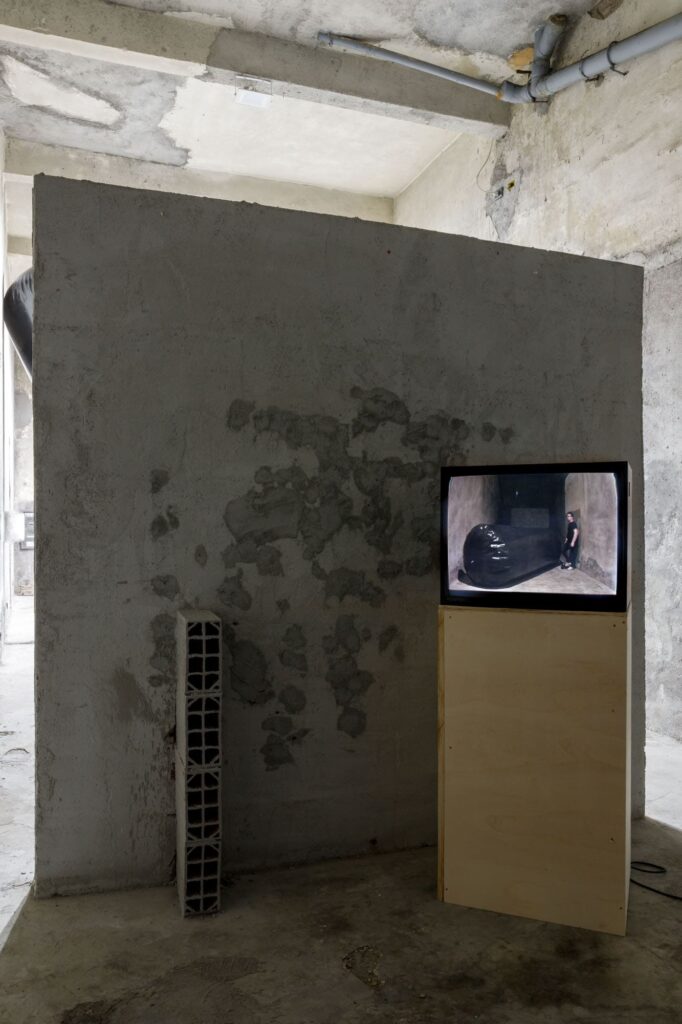
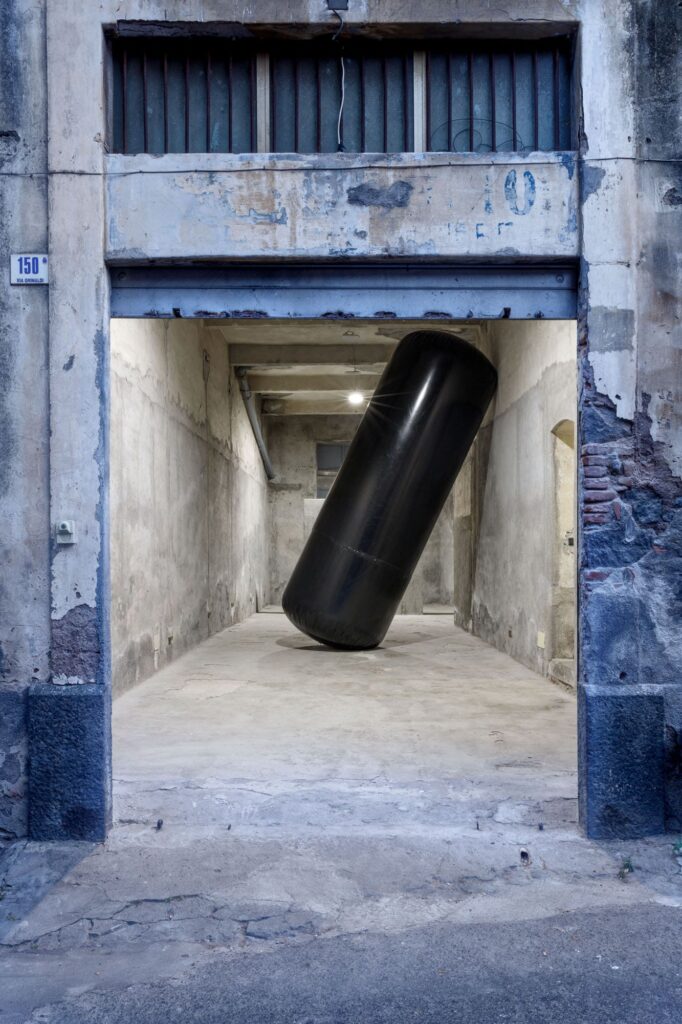
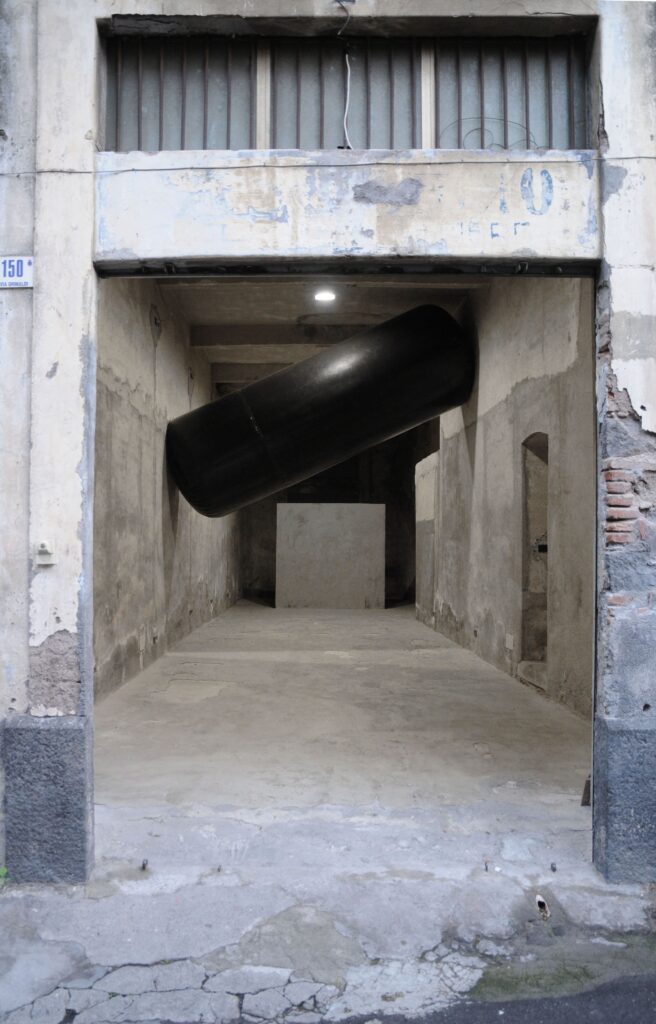
en
“What do you do? For a living, i mean” – “oh i’m just visiting!” 1
With a heartfelt reference to the character created and played by David Bowie, Fabrice inaugurates his solo exhibition at Bocs. Conceiving art as something temporary and transitory, not stable, and inspired by the Bocs mission “[…] art that involves everyone, whether or not they work in the field”, this mission focuses on an art that establishes relations with a public open to new research and experimentation, and that aims to broaden the concept of cultural fruition and consumption.
oh, i am just visiting wants to be a parody of traditional sculpture and the language with which we decipher it. With his typical irony and the use of industrialised materials, Fabrice works a lot with the artefact itself in relation to the user and its environment. He appropriates it freely, exploiting it in all its components and handling it at will but with extreme care.
In this case, the artefact manipulated by Fabrice is borrowed from a nearby place, the port. A new object, not present in his artistic experiential baggage and above all unknown to his Swiss side. The fender.
The fender is an elastic body that acts as protection for boats against bumps or chafing. It can be of various material forms and consistencies (solid, foam-filled, hollow, inflatable, etc.), but it is important that it is made of elastic material and that it is arranged in such a way as to cover the full extent of possible reciprocal movement between the surfaces that may come into contact. Aiming at the extrication of the fender, Fabrice makes it the protagonist of his own. Recreating it with the PVC material of children’s bouncy castles. In this decontextualised way, the illusory fender becomes an art object. Simply placed on the ground, it represents a parody of sculpture, a ready-made made by Fabrice. Its condition in life is determined. With time it will lose volume, deflate and fall. A deducible metaphor for life.
From his artistic past, Fabrice returns to confront himself with video. An ironic and pointless making of the exhibition turns into an hour and a half-long film. During its playback, we witness the swelling of the sculpture, its taking shape in space. The act of inflating exhausts Fabrice, his muscles and body are affected. The gesture is representative of the work, fatigue and dedication behind each exhibition
The title of the exhibition is then also a metaphor, a summary of Fabrice’s conception of life and his making. Art is transient and cyclical; it is temporary and passing. Objects are also limited in time, with an end.
All that remains for us as viewers is to visit this exhibition, to confront ourselves with an object estranged from its environment. We are all just passing through, we are all just visiting.
Giulia Papa
1. quote from The Man Who Fell to Earth di Nicolas Roegg con David Bowie.